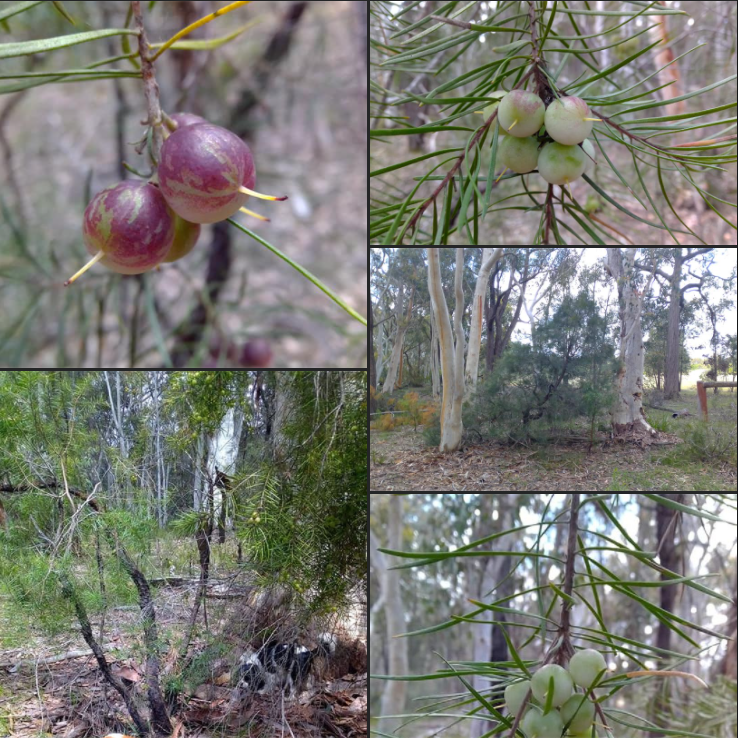Geebung fruit - Australian Bush Tucker
The small yellow flowers appear in summer and autumn (December to April), followed by small green fleshy fruit, which are classified as drupes.
Geebung fruit generally begin to ripen in November. Best eaten when they fall to the ground. Sweet floral subtle flavour.
Fruits ripen on the ground and are best when soft. Discard the skin and enjoy the soft pulp around the seed (Stewart & Percival, 1997:42)
Fishing lines were made from bark [of E. agglomerata] strengthened by soaking it in a solution of the geebung (P. laurina ) bark in water. (Turbet in Stewart & Percival, 1997:22)
"Stormies" P. levis (photo opposite), common shrub … tiny four-petalled yellow flowers cover the plant in winter. These are followed by yellow-brown fruit about the size of a grape … one of the most popular 'bush lollies' which should be collected only after they have fallen to the ground. (Wreck Bay Community & Renwick, 2000:40)
Pulp chewed off stone … like nibbling sweet cotton-wool (Cribb & Cribb, 1987:48)
Important Aboriginal foods (Zola & Gott, 1992:35)
Notes:
Fruit the 'size of a small grape' … common in the coastal regions of eastern Australia and they are 'prolific fruit bearers.' (Wreck Bay Community & Renwick, 2000:36)
Had 'hard stones which were dispersed by emus and possums.' Persoonia juniperina found all over Vic. has narrow leaves, prickly (Zola & Gott, 1992:35)
All 90 species are native to Australia … yellow flowers and oval fruit still with the style attached (Stewart & Percival, 1997:42)
Language names:

Copyright © - Bomoweb | NR